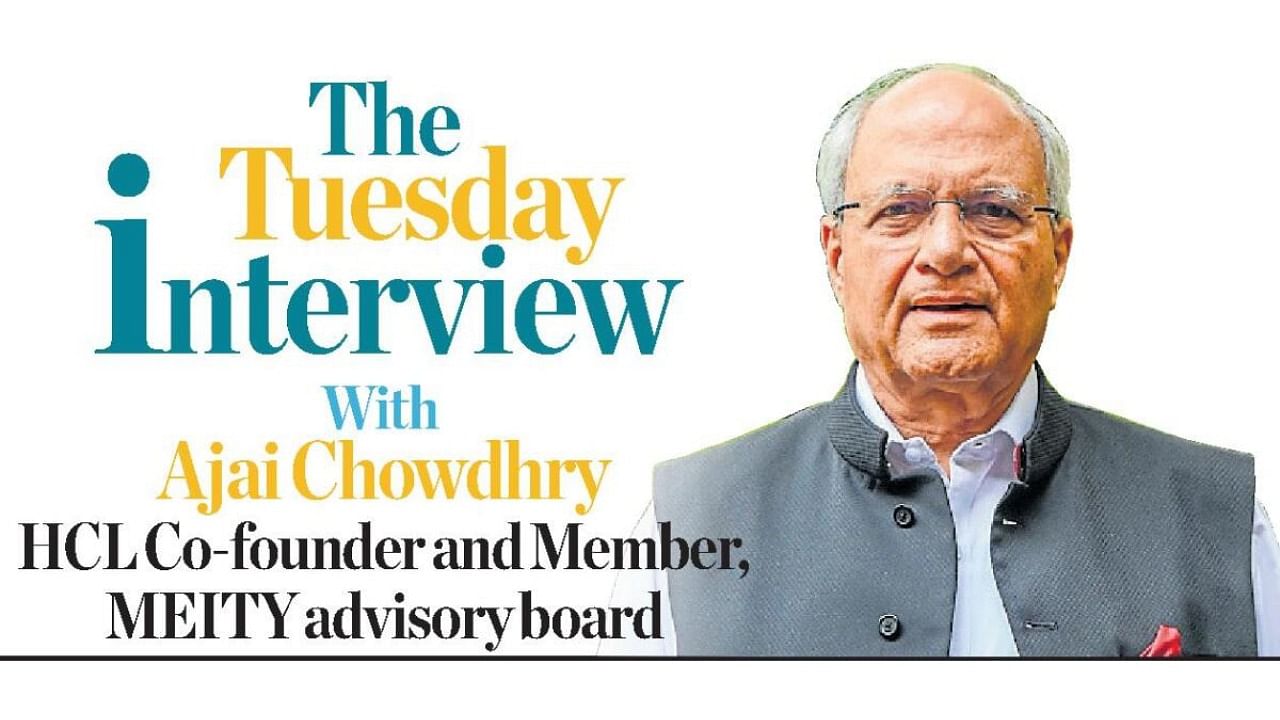
The Indian hardware industry is just recuperating from the pandemic and the semiconductor shortage that hit production globally. While the pandemic hit businesses hard, it also brought out the flaws in the system, and India is now looking at a strategy to ensure self-sufficiency in semiconductor production to be better placed in the global market. HCL co-founder, Padmabhushan awardee, and member of the advisory board of the India semiconductor mission (MEITY), Ajai Chowdhry, spoke to Sneha Ramesh of DH about the interventions needed, what the focus for the Indian hardware industry should be and his book, Just Aspire: Notes on Technology, Entrepreneurship and the Future. Excerpts:
What is your idea for the future of the Indian hardware industry?
We are no doubt manufacturing a huge number of products, and the volume is high. However, over the years, though manufacturing has increased, value addition hasn't. We should explore where the value is and move towards it. For instance, a $600 Apple product could cost only $34 to manufacture. India may be manufacturing a large number of such products, but the value the product brings is as little as $34 out of $600. Hence, we should look at upgrading India to a product nation rather than focusing only on manufacturing.
How does this idea of turning India into a product nation fit with ‘Make in India'?
Often, people misunderstand ‘Make in India’ to mean ‘Manufacture in India’. As I said, just manufacturing is not enough; we should design and manufacture our own products. That is the only way we can grow. We should create our own products, sell them locally and eventually make it to the global market. On the same lines, we have written a white paper and held discussions with MEITY. Now, a task force has been set up to identify 100 products that can be designed and manufactured in India. Over the next few years, we want to identify 500 such products.
The semiconductor shortage brought the manufacturing industry to a standstill. What action does this prompt?
India should become self-sufficient in manufacturing semiconductors. We should be able to meet our needs without depending on imports. The government’s strategy to set up semiconductor plants is the right way forward. We are doing the right thing.
Now, there is an increased inclination towards academia-industry partnerships. How does this help?
There is an unsaid connection between academia, research, and industry. While partnerships between academia and industry are common globally, India has fallen behind in getting the two to work together. This growing partnership is a positive sign. Generally, the industry reaches out to academia, looking for partnerships. But I suggest it should be a two-way relationship, and academia should reach out to industries more.
Indian start-ups are making their presence known globally. However, many of them are also failing to make a mark. How do India's startup ecosystems fare when compared to the global standards?
There are several start-up incubators in the country. But what is missing is a sense of business orientation. I feel there is a need for strong business mentors to guide our start-ups to sell, brand, and distribute their products. Lately, there have been a few funding problems. But I feel many start-ups received a lot of money too early, and this resulted in fall-backs. The initial, temporary problems with funding helps the start-ups explore ways to deliver better results with less money.
You have been an industry veteran and have seen the industry grow over the last 50 years. What has changed?
Back in the 1970s, there was a ban on imports, and hence everyone was enthusiastic to innovate and design products. However, after India became a member of the World Trade Organisation in 1995, many small electronic companies, unable to withstand the competition, closed down. However, over the years, we have been able to formulate new policies. In the last five years, the industry has grown exponentially, and we are manufacturing enormously.
Tell us about your book, ‘Just Aspire: Notes on Technology, Entrepreneurship and the Future'.
As the name suggests, the book is all about aspirations. It speaks in depth about my experience in the field and my learnings. I have dedicated a chapter to speaking about entrepreneurship and how to sell products. This will help young people and aspiring entrepreneurs. In the end, I have talked in detail about my vision for India.